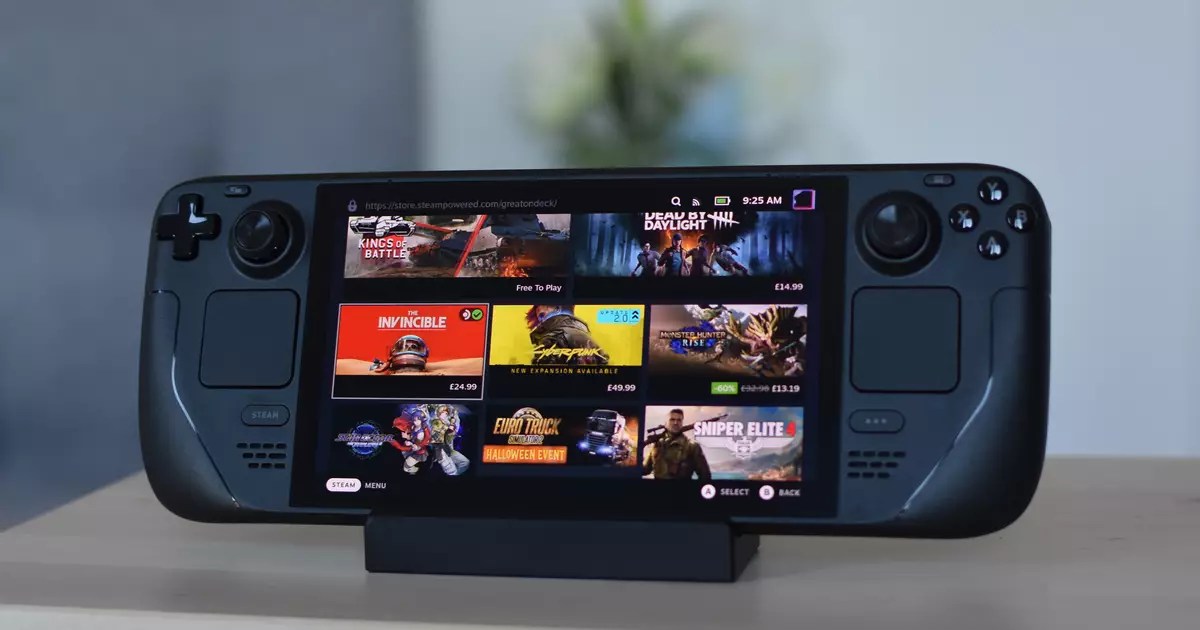In an age where technology evolves at a dizzying pace, Valve continues to garner attention for its cutting-edge ventures into hardware. Following successful releases like the Valve Index and the Steam Deck, recent reports hint at potential developments that could revolutionize gaming as we know it. NotebookCheck has suggested that Valve may be investigating ARM architecture for its next hardware project, a significant shift from the traditional x86 architecture that has dominated PC gaming for years.
At the heart of this hardware speculation lies a new software entity dubbed ‘ValveTestApp3043620,’ discovered through SteamDB. This testing application is linked to a wide range of popular PC games, suggesting that Valve is tinkering with a version of Proton capable of running on ARM64 processors. Known predominantly for its efficiency, ARM architecture is the go-to for devices such as the Nintendo Switch and many mobile phones, leading to the question of whether Valve is on the verge of an ambitious leap forward.
The implications of embracing ARM could be substantial. Engines built on this architecture tend to be more power-efficient, which might make them ideal candidates for portable gaming console designs or even a standalone VR headset. Moreover, with ARM compatibility with Android operating systems, the prospect of seamlessly integrating mobile games into the PC ecosystem appears far more feasible than it’s ever been.
Valve is no stranger to the realm of hardware. The company has been churning out gaming hardware for more than a decade, from the early Steam Machines to the current Steam Deck lineup. Each product has showcased Valve’s intent to innovate within the gaming space. Given this penchant for hardware development, it seems improbable that Valve would abandon its hardware pursuits simply because of a potential shift in processing architecture. However, the transition from x86 to ARM is not without its challenges.
From a power-user perspective, ARM chips offer an attractive proposition. They typically deliver lower power consumption without sacrificing performance, a narrative that could support the case for a new Steam Deck iteration or an advanced VR headset. Yet, transitioning to ARM architecture also presents unique obstacles. The current landscape of PC gaming is heavily rooted in x86 architecture, with countless games developed exclusively for this platform. The challenge now lies in effectively translating these titles without compromising their performance or fidelity.
Proton, which serves as the compatibility layer allowing Windows games to run on SteamOS, has a crucial role to play in this potential transition. While the team has successfully maneuvered around the compatibility barriers, venturing into ARM may necessitate a more rigorous emulation process, possibly leading to performance degradation. Adapting game codes meant for x86 to run on an entirely different architecture could prove to be a heavy lift.
Despite the potential challenges, the notion of Valve unveiling a next-generation console leveraging ARM’s capabilities sparks intrigue among consumers and developers alike. While it appears that the emergence of an ARM-powered Steam Deck may be years away—a notion supported by Valve’s previous acknowledgments—it doesn’t inhibit speculation about other hardware ventures. A standalone VR headset, leveraging ARM for its efficiency while also enabling deeper compatibility with mobile gaming, seems a plausible outcome as Valve explores this new frontier.
Moreover, the evolving gaming landscape necessitates adaptation. The gaming world increasingly gravitates towards hybrid console designs and mobile integrations; hence, Valve’s potential ARM endeavor could allow it to tap into this growing market. Not only could it offer seamless gaming experiences across platforms, but it might also unify disparate gaming ecosystems.
In summation, Valve’s exploration of ARM architecture represents both an opportunity and a challenge. While it could usher in exciting new gaming experiences—enhanced efficiency and mobile compatibility—there are inherent risks involved in making such a monumental shift. It remains to be seen how Valve will navigate this potential transition, but one thing is certain: the gaming community is watching closely, waiting for a new chapter that might redefine the future of gaming hardware. The implications of this shift could resound far beyond Valve, shaping how we approach gaming and hardware integrations for years to come.


Leave a Reply